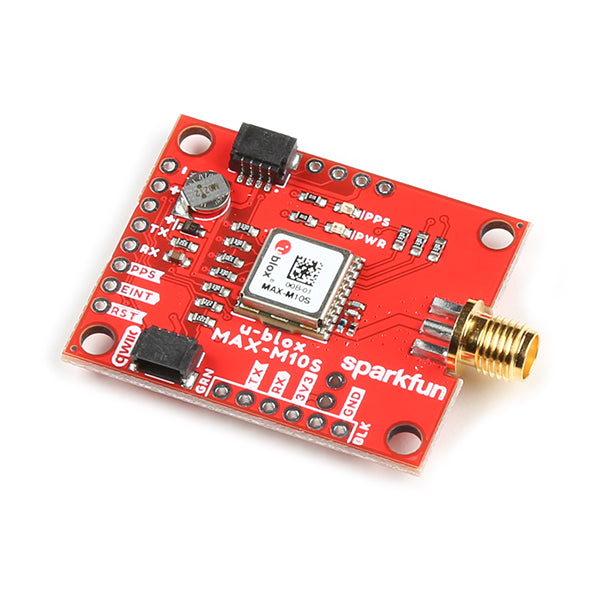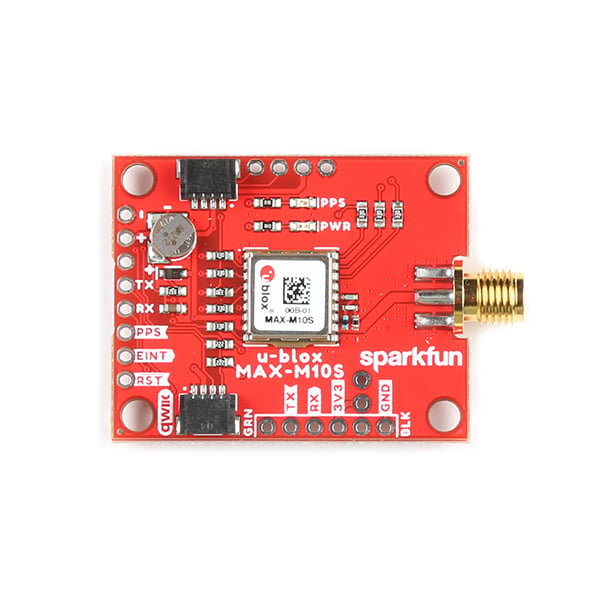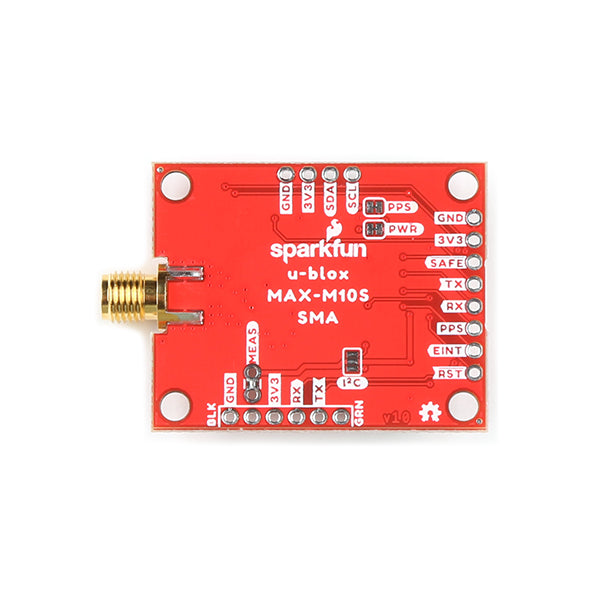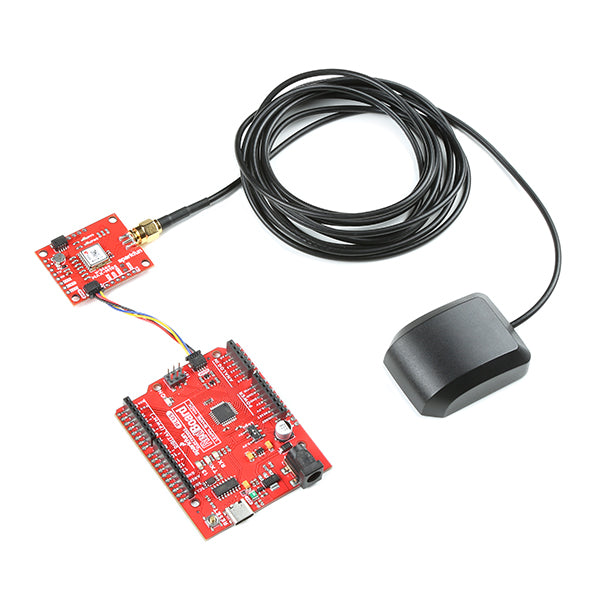Beschreibung
The on-board MAX-M10S GNSS receiver can receive signals from the GPS, GLONASS, BeiDou, and Galileo constellations. Thanks to the u-blox Super-S technology, the module offers improved RF sensitivity with small antennas and in non-line-of-sight scenarios. We've included an SMA connector for a sturdy connection when attaching an external antenna. The board is also equipped with an on-board rechargeable battery that provides backup power to the module's RTC. This reduces the time-to-first fix from a cold start (~24s) to a hot start (~1s). The battery will maintain RTC and GNSS orbit data without being connected to power for up to five hours. This increases precision and decreases lock time in battery operated devices without compromising GNSS performance.
Additionally, this u-blox receiver supports I2C which makes it perfect for Qwiic compatibility so we don't have to use up our precious UART ports. Utilizing our handy Qwiic system, no soldering is required to connect it to the rest of your system. However, we still broke out 0.1"-spaced pins in case you prefer to use a breadboard. For users that prefer to communicate over UART, we made sure to configure the UART pin grouping to an industry standard to ensure that it easily connects to a Serial Basic.
U-blox based GNSS products are configurable using the popular Windows program called u-center. Plenty of different functions can be configured on the MAX-M10S: baud rates, update rates, spoofing detection, external interrupts, etc. We've also written an extensive Arduino library for u-blox modules to make reading and controlling the MAX-M10S over our Qwiic Connect System easy. Leave NMEA behind! Start using a much lighter weight binary interface and give your microcontroller (and its one serial port) a break. The SparkFun Arduino library shows how to read latitude, longitude, even heading and speed over I2C without the need for constant serial polling.
Note: The I2C address of the MAX-M10S is 0x42 and is software configurable. A multiplexer/Mux is required to communicate to multiple MAX-M10S boards with the same address on a single bus. If you need to use more than one MAX-M10S with the same address consider using the Qwiic Mux Breakout.
Verschlüsselte Zahlung
Ihre Zahlungsinformationen werden sicher verarbeitet. Wir speichern keine Kreditkartendaten und haben auch keinen Zugang zu Ihren Kreditkartendaten.
Zolltarifnummer:
Herkunftsland:
Das hängt davon da, wo Sie sich befinden. Nach Übergabe der Bestellung an UPS beträgt die Lieferzeit in Deutschland ca. 2-3 Tage, innerhalb Europas ca. 1 Woche.
Wir versenden unsere Artikel mit unserem Versandpartner UPS.
Wenn wir Ihre Frage noch nicht beantwortet haben, können Sie uns kontaktieren, und wir werden uns so schnell wie möglich bei Ihnen melden.




